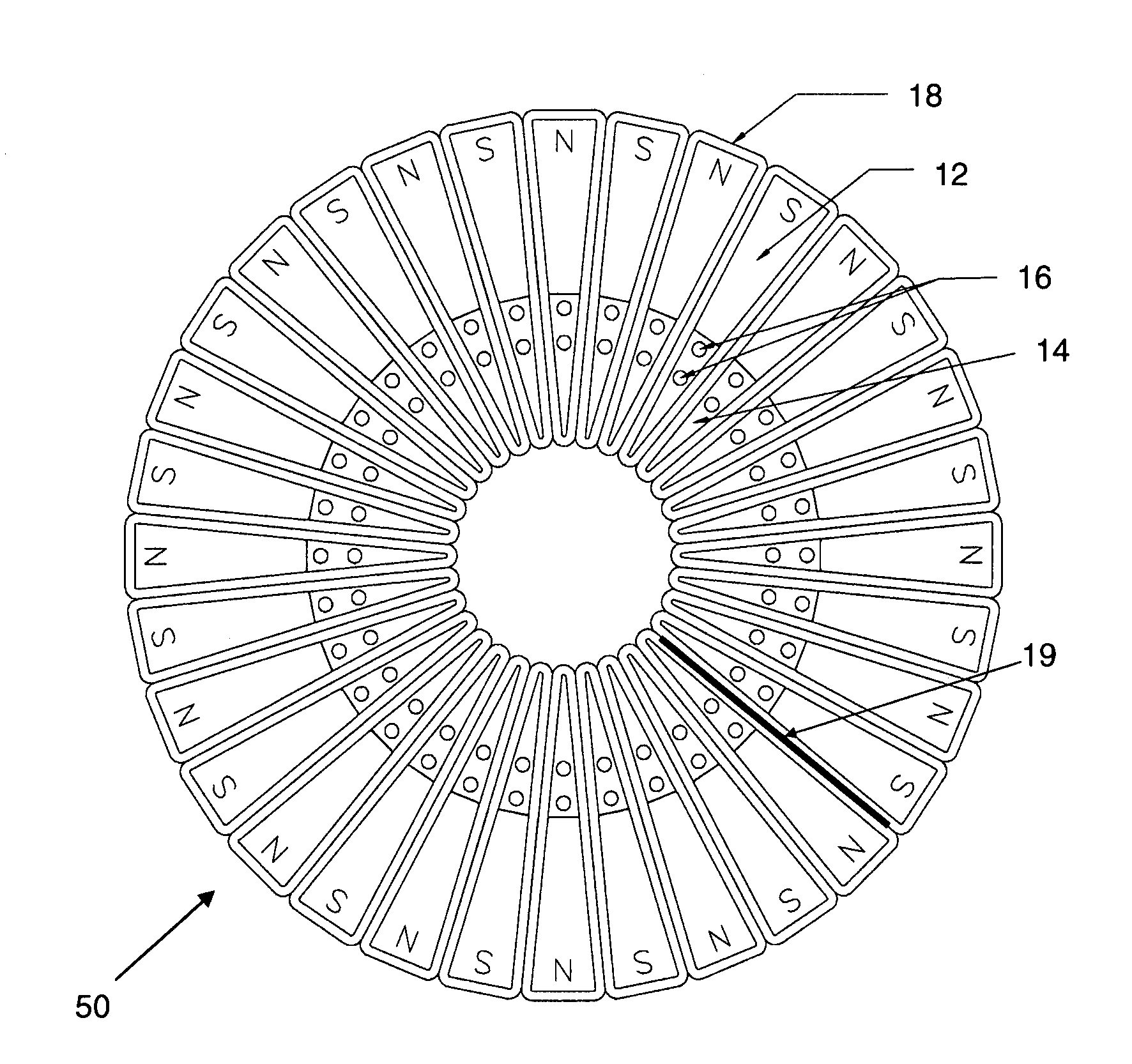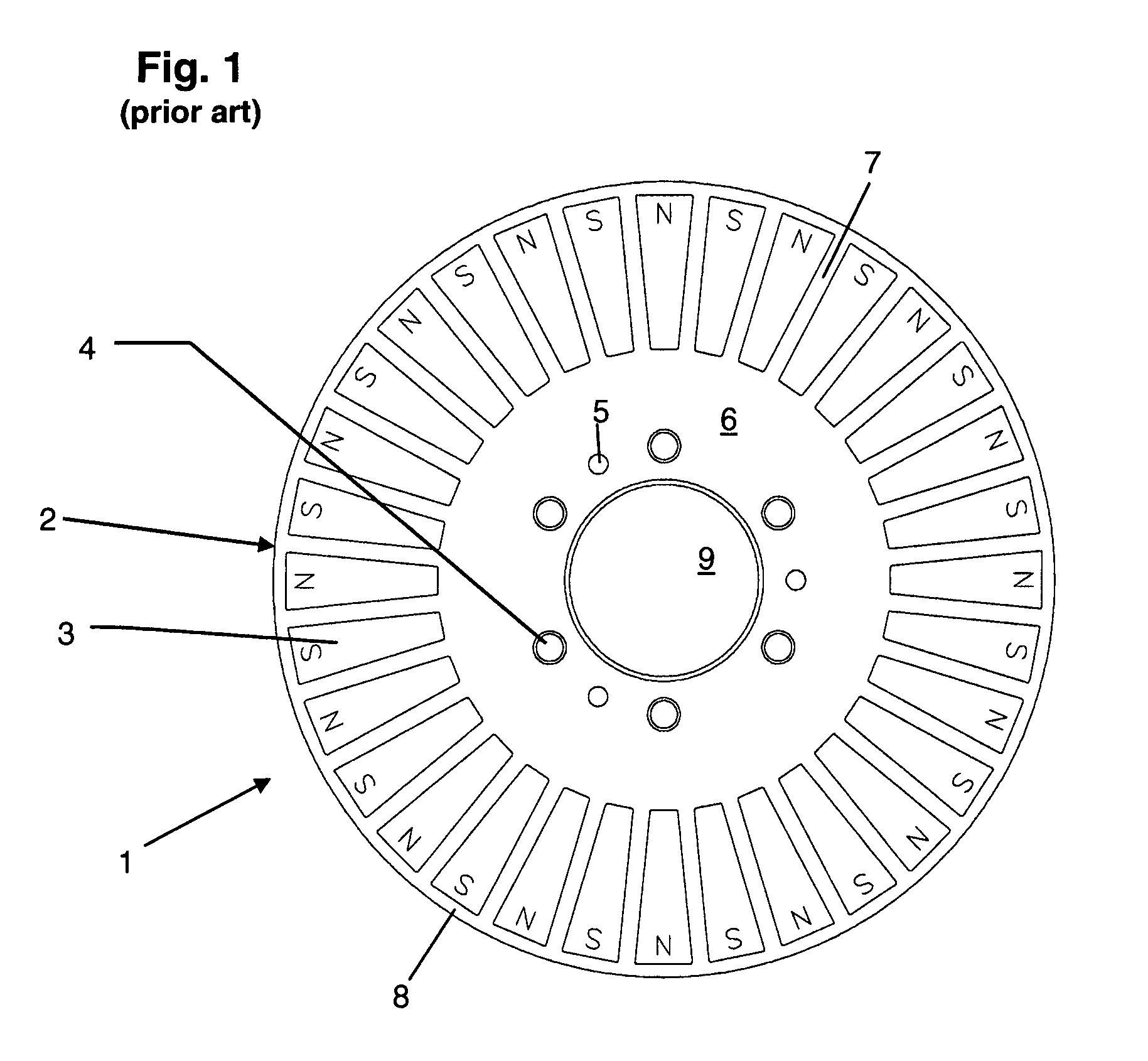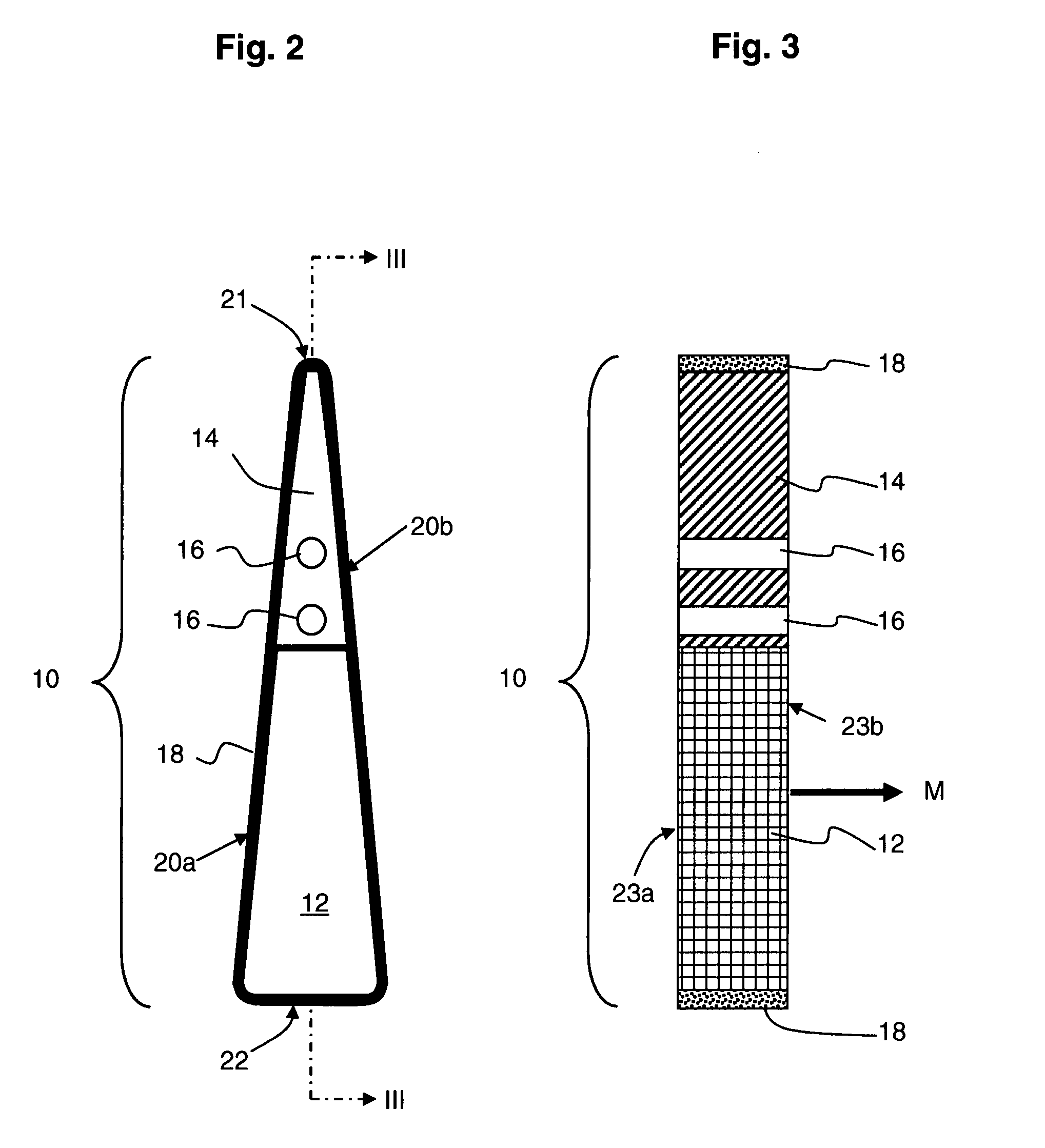Segmented composite rotor
a composite rotor and axial geometry technology, applied in the direction of rotating magnets, magnetic circuit rotating parts, synchronous machines with stationary armatures, etc., can solve the problems of inefficient motor design, difficult axial geometry of rotor design and construction, and high speed design that is considered particularly challenging, so as to improve the cost effectiveness of the device, the effect of high efficiency and efficient construction
- Summary
- Abstract
- Description
- Claims
- Application Information
AI Technical Summary
Benefits of technology
Problems solved by technology
Method used
Image
Examples
Embodiment Construction
[0032]Referring to FIG. 1, there is depicted a permanent magnet rotor 1 used in a prior art, axial airgap, dynamoelectric machine. Rotor 1 is generally has the shape of a flat, low aspect ratio disk or plate. It comprises a plurality of permanent magnets 3 spaced around the circumference of support structure 2. The rotor is connected to a machine shaft in a conventional manner that may include a hub on either or both sides or other like structure (not shown) that engages support structure 2 and is attached to it using a plurality of fasteners, such as bolts or rivets, passed through mounting holes 4 symmetrically disposed on a bolt circle around a central aperture 9 through which the machine shaft passes. Alignment holes 5 are optionally provided to engage alignment pins in the hubs. Support structure 2 is typically fabricated from a non-magnetic metal by forming the required openings in an initially solid plate, e.g. by any conventional machining method. The openings include a requ...
PUM
| Property | Measurement | Unit |
|---|---|---|
| frequencies | aaaaa | aaaaa |
| aspect ratio | aaaaa | aaaaa |
| densities | aaaaa | aaaaa |
Abstract
Description
Claims
Application Information
 Login to View More
Login to View More - R&D
- Intellectual Property
- Life Sciences
- Materials
- Tech Scout
- Unparalleled Data Quality
- Higher Quality Content
- 60% Fewer Hallucinations
Browse by: Latest US Patents, China's latest patents, Technical Efficacy Thesaurus, Application Domain, Technology Topic, Popular Technical Reports.
© 2025 PatSnap. All rights reserved.Legal|Privacy policy|Modern Slavery Act Transparency Statement|Sitemap|About US| Contact US: help@patsnap.com



